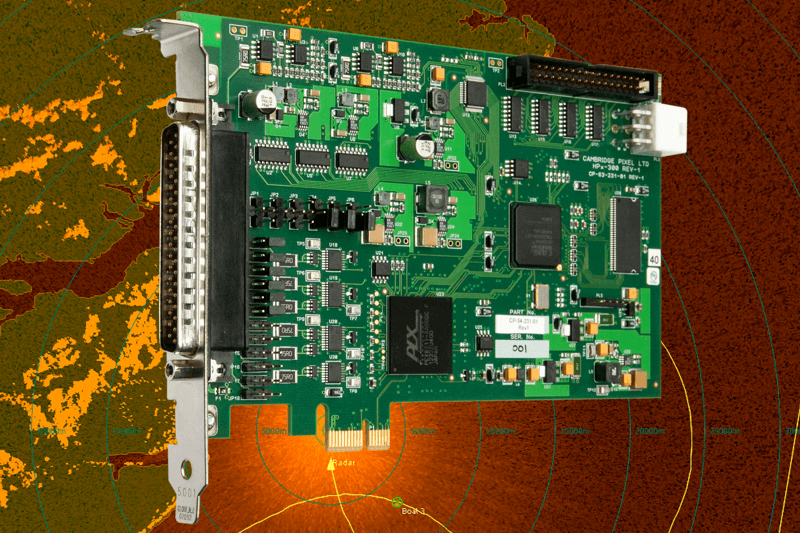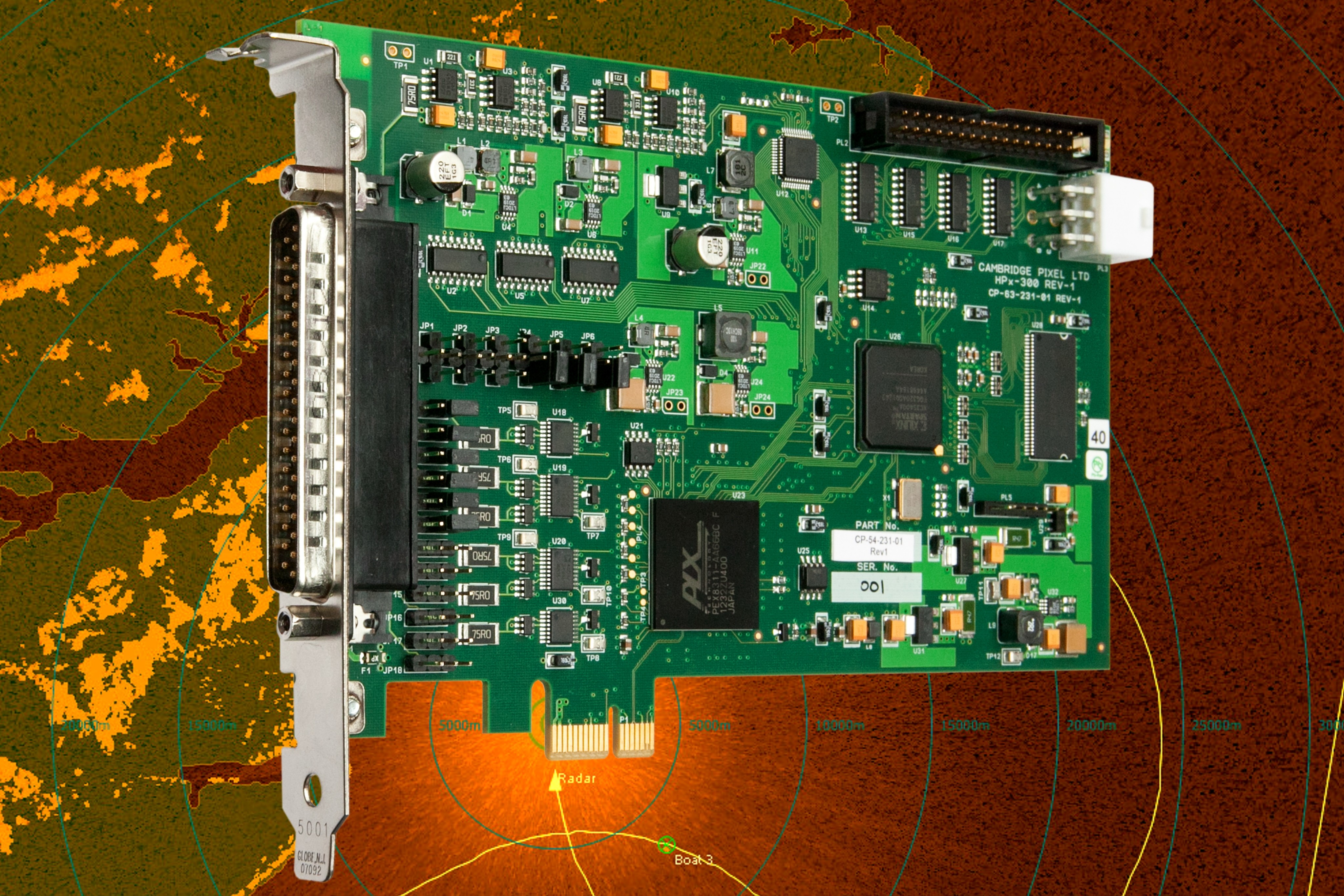- HPx-300 allows C2 and VTS systems integrators to perform substantial testing of a radar tracking or radar display applications ahead of connection to the radar
CAMBRIDGE, United Kingdom, August 21st, 2013 - Cambridge Pixel (www.cambridgepixel.com), a developer of sensor processing and display solutions, has unveiled its HPx-300 radar output card. The new PCI Express card will allow developers of radar tracking or radar display applications to perform an end-to-end test of their systems in the laboratory ahead of deployment with a radar.
The HPx-300 generates radar signals, including video, trigger, azimuth and ship heading, to support radar system test, simulation and video streaming. The card offers considerable flexibility for generating a wide range of analogue and digital signal types and voltages, permitting many types of radar signals to be simulated. The card can also be programmed to simulate a wide range of rotation speeds, radar pulse rates and scanning types, including conventional rotating, sector and random scan.
Commenting on the announcement, David Johnson, managing director, Cambridge Pixel, said: "The HPx-300 has been developed as a response to our customers' need for a method of testing their tracking or display systems in the laboratory before deployment with a radar. Often, customers only get to test their systems with live data a few weeks before the project is signed off - our solution takes the risk away of any last minute bugs or data flow issues.
"With the HPx-300, system integrators - typically those developing command and control (C2) or vessel traffic services (VTS) applications - can now implement a representative test and simulation capability to permit substantial testing at the front end of the chain to validate every element of the radar tracking or display application before connecting to the radar. The ability to generate a wide range of radar signal types, and permit accurate control over operating parameters, is a key part of the solution."
The HPx-300 card can be used in conjunction with Cambridge Pixel's Windows-based SPx Simulator software to generate realistic radar video signals comprising targets and terrain, with synchronised track reports, navigation and secondary radar. Also, for simulation and training applications, the SPx Simulator software combines with the HPx-300 card to provide a highly capable ready-to-run PC-based radar simulator.
The HPx-300 card can be supplied with a low-level board support package, the SPx Development software or the SPx Simulator application.
Cambridge Pixel's HPx-300 card is part of a family of radar acquisition and processing components that provide systems integrators with a powerful toolkit to build server and client display systems. The company's world-leading SPx suite of software libraries and applications provide highly flexible, ready-to-run software products or 'modules-of-expertise' for radar visualisation, radar video distribution, plot extraction and target tracking.
Cambridge Pixel's engineering team has decades of experience of developing complex radar processing and display systems for naval, air traffic control, vessel traffic, Electronic Chart Display and Information Systems (ECDIS), security and airborne radar applications. Cambridge Pixel's technology has been implemented in mission critical applications with companies such as BAE Systems, Barco Defense, Blighter Surveillance Systems, DRS, Kelvin Hughes, Lockheed Martin, Navtech Radar, Raytheon, Samsung Thales, Tellumat and Toshiba.
Media contact:
Martin Brooke (for Cambridge Pixel)
Martin Brooke Associates
Tel: +44 (0) 1223 882174
Email: [email protected]
Found this interesting? Please share it with your network:



